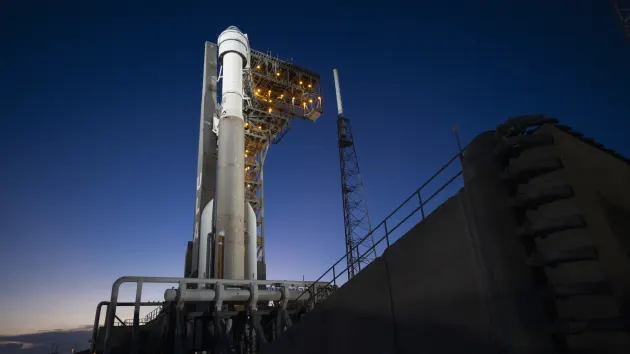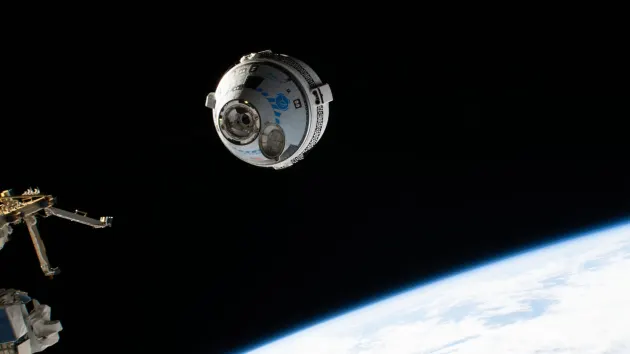Boeing and NASA are still planning to launch the Starliner capsule on June 1, even though there’s a small leak in its propulsion system. This mission will be the first time Starliner carries U.S. astronauts, but it was delayed earlier this month.
“We can handle this leak, so it’s not a safety problem,” said Boeing Vice President Mark Nappi on Friday.

Boeing and NASA are still going ahead with the launch of the Starliner capsule, even though there’s a small leak in its propulsion system. This will be the first time Starliner carries U.S. astronauts.
“We’ve looked into the cause of the leak and we’re confident we can handle it,” said Mark Nappi, Boeing’s Vice President in charge of the Commercial Crew program, during a press conference on Friday.
“We’re aiming for June 1 for the first crewed launch, with backup dates on June 2, June 5, and June 6,” Nappi added.
The mission, called the Starliner Crew Flight Test, is the final big test before regular flights. It will take NASA astronauts to and from the International Space Station.
The Starliner’s first crewed mission has been delayed for many years, while SpaceX’s Dragon capsule has been regularly flying astronauts for NASA since 2020. Boeing has spent $1.5 billion on Starliner setbacks and received almost $5 billion from NASA for development.

NASA and Boeing canceled a launch on May 6, just two hours before liftoff, because of a problem found with the Atlas V rocket. This rocket, which will carry the Starliner into space, is made and operated by United Launch Alliance (ULA), a partnership between Boeing and Lockheed Martin.
During a press conference on Friday, a ULA official said they replaced the rocket’s troublesome valve a week after the launch was postponed.
However, after calling off the launch, a “small” helium leak was discovered in the Starliner. This led Boeing and NASA to do more checks to make sure the capsule is safe for the mission. NASA’s Ken Bowersox, one of the agency’s top officials, said on Friday that “it’s taken a while for us to be ready to discuss” the helium leak problem because it’s so complicated.
NASA and Boeing believe the leak is coming from a seal in one part of the spacecraft’s helium propulsion system. Even after testing following the May 6 delay, NASA’s Steve Stich said that the leak rate hasn’t changed.
The plan is to keep an eye on the leak before launch and check it again once the Starliner reaches the International Space Station. Stich said they’re confident the other seals won’t leak.
Stich also said that NASA has flown vehicles with small helium leaks before, including missions with the Space Shuttle and SpaceX’s Dragon.
NASA, Boeing, and ULA will review the leak again on May 29. They aim to move the rocket and capsule to the launch pad on May 30 for the June 1 attempt.




